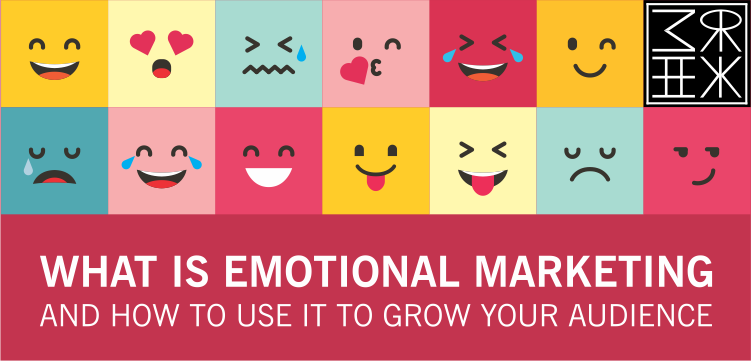There are hundreds of smartphone manufacturers in the world, yet millions of people chose Apple. In the US alone, there are over 85.8 million iPhone users.
Why is that? You could say that the iPhone’s build quality, specs, and its reputation as a cutting-edge device make that choice easy. But do people choose to buy an iPhone based on calm reasoning and quiet deliberation? Is this the reason why four out of five US teens own an iPhone?
According to neuroscience, most customers buy on emotion and then use logic to justify their decision. And while Apple may have its critics, there’s no denying that it’s a brand to which many people are emotionally attached.
Apple breathes confidence and depicts simplicity as the ultimate sophistication. It conjures trust, satisfaction, and makes people feel proud to own a technically superior device. Even those who have not owned an Apple device before cannot be immune to the “Apple effect.”
Apple’s widespread popularity, its reputation as an innovator, its upbeat, cool image, and not least, its iconic logo, lends it a near-legendary status. Apple owes this success in part to its clever branding and emotional marketing.
Wouldn’t be amazing if you could associate the right emotions with your brand, too?
Well, you can – that’s where emotional marketing comes in. In this post, you’ll learn more about the science behind the use of emotion in marketing, discover some inspiring emotional marketing examples, and learn how to use it to grow your audience. But let’s start with the basics.

What Is Emotional Marketing?
Emotional marketing uses visual communication and storytelling to generate strong emotions in a target audience. It’s not a new approach to marketing. It’s been used by giants like Coca-Cola and McDonald’s well before the advent of social media. Remember Cola’s iconic Santa Claus TV ads?
Today, emotional marketing is everywhere. Bloggers use it to promote their posts, increase their readership, and generate more comments. Brands of all sizes use it to improve engagement on social media and improve conversions across channels. NGOs and other organizations use it to spread the word about their mission and raise funds.
Adapted to consumer trends and the sensibilities of modern audiences, emotional marketing focuses on the customer rather than the brand. It does away with self-promotion to tackle the problems that matter most to people.
But different audiences have different sensibilities. Most marketers who want to appeal to people’s emotions start by understanding their audience and defining the key emotions they wish to evoke.
Nevertheless, most emotional marketing strategies tend to rest on a few core pillars:
- Compelling storytelling
- Powerful visuals
- Authenticity
- Sincerity
- Transparency
Emotional marketing doesn’t only have a social impact and emotional value. It doesn’t only reduce anxiety, promote wellness, or create a sense of nostalgia. It also has practical value. It saves time, informs, simplifies, reduces effort, and improves results. It aims to spur people into action, to help them overcome a challenge or difficulty or join a worthwhile cause.
Apple’s Think Different ad campaign of the late 1999s is a great example. Using footage of people who changed the world, this campaign inspired viewers to think differently and achieve more. It epitomized the spirit of a brand that excelled by being inherently different.
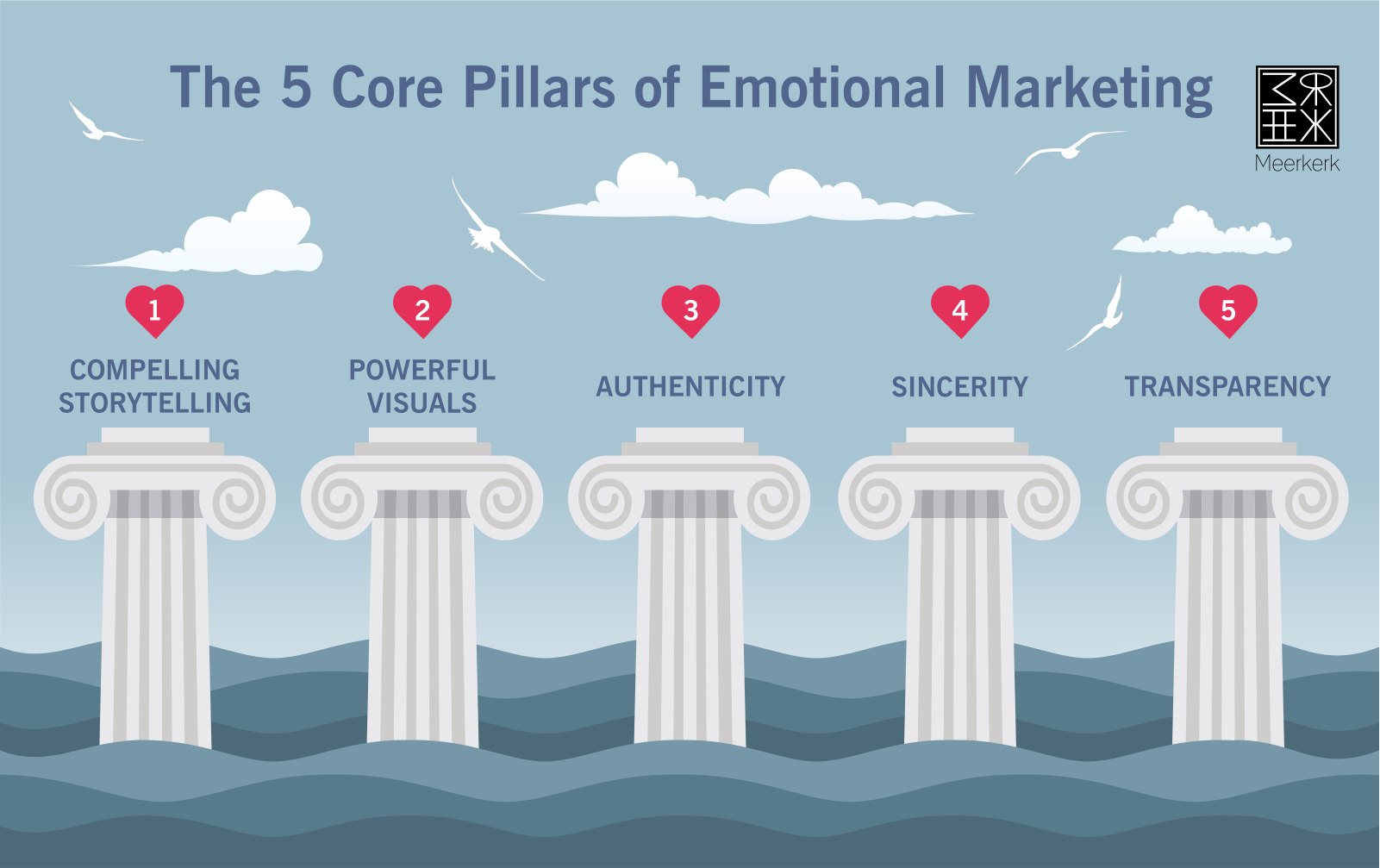
The Science Behind Emotional Marketing
Why does emotional marketing work? What makes it so special? It’s not hard to see why as many as 95% of purchasing decisions are subconscious. Today, we are bombarded with choices everywhere we turn. Whether we are in our local grocery store or shopping on Amazon, we face a higher number of options than people have ever faced before in history.
The information overload is disconcerting. It numbs our brains. It makes choosing so difficult. No wonder then that with the data overload we fall back on our emotions.
Our brain doesn’t perceive a brand as a simple external object. The processes underlying brand recognition are mostly unconscious and elicit memories and past experiences. In the case of familiar brands, this process leads to positive or negative associations.
Brands that we like become part of our lifestyle. Our brain treats them not as an abstract concept with a tagline and a logo but almost like an entity with a distinct personality that we relate to or not. Brands have an identity, and our brains process and, to some extent, create this identity.
Emotional marketing recognizes that most customers buy on emotion and seeks to establish an emotional connection with them. But as far as marketing strategies go, emotional marketing is remarkably sincere. It relies on the power of color, imagery, and storytelling to draw attention, inform and persuade. No surprise then that emotional ads perform significantly better than purely rational ads.
The Benefits of Emotional Marketing
How exactly is emotional marketing different from other marketing strategies? Here are some of the key reasons why you should focus on emotional marketing instead of other marketing strategies.
Helps You Make a Great First Impression
Emotional marketing is often arresting. It makes people pause and pay attention to what you have to say. That’s because it’s visual and sends a clear message. Today, brands often have only a few seconds or less to make a good impression. If they miss that opportunity, they may lose a customer forever.
Makes Your Brand More Humane
Because it’s about them rather than you, emotional marketing evokes empathy. Empathy, in turn, makes your brand easier to relate to, more humane. Customers tend to prefer humane brands for the same reason for which we prefer kind and considerate people – they appeal to our higher emotions and help to define our sense of morals.
At a time when they are swamped with choices, people use a brand’s humanity as a key differentiator. Emotional marketing helps you take the story out of the office and focus on the individual perspective.
Helps People Make Up Their Minds
Emotional marketing helps people decide with their hearts. With so many options around, people often find themselves comparing products and brands that are very similar. So similar that it’s hard for them to choose.
That’s where emotional marketing can make a difference. By focusing on universal feelings rather than logic, and imbuing a brand with a distinctive personality, emotional marketing makes choosing easier.
Inspires Action
For many marketers today, reaching a wide audience is not nearly as challenging as persuading people to act. A low conversion rate is a common symptom of ineffective marketing and one that emotional marketing can address.
Interestingly, all the core emotions have the power to spur people into action. Positive, happy content increases engagement and shares, as this study of the Facebook news feed proves. Of all types of content, happy content spreads the fastest on social media.
But sad content can be just as powerful. Sadness produces the stress hormone cortisol and promotes altruism. That’s why associating sadness with a worthwhile cause is a powerful way to make people act.
Appeals to All Audiences
Emotional marketing can be equally effective with young and old audiences. The language of emotion is universal – anyone can understand it. When it’s visual, emotional marketing becomes easy to understand. Also, it can be effective during all stages of the buyer’s journey, from awareness through comparison to consideration.

A Step by Step Guide to Emotional Marketing
Emotional marketing can help you achieve a variety of objectives, from boosting exposure to increasing conversions. In this emotional marketing guide, we’ll be focusing on how to grow your audience. Growing your audience using emotional marketing will have cumulative benefits, including more engagement and more visibility.
1. Understand Your Audience
It all starts not with your brand, but with your audience. Unlike other approaches to marketing, emotional marketing shifts the focus from your brand to your audience. It makes it about them – their needs, their challenges, their pain points. That’s why it’s so effective, and why it connects and engages.
Different audiences respond to different emotions. Take for example a new private kindergarten. To promote its services, the kindergarten can easily opt for a positive, playful, and cheerful campaign. It can use color boldly to highlight that kids are having fun while creating a sense of security for parents. Key emotions here are joy, trust, and optimism.
That’s why you need to know your audience very well. If you don’t, your emotional marketing may focus on the wrong feeling and either fall flat or trigger the wrong emotional response.
Avoid generalizations. While it’s true that cake makes people happy or that a pair of comfortable running shoes can inspire them to get active, you don’t have to reduce everything to one basic emotion. Audiences are more complex than that, and then you have your competitors to consider as well as any trends that affect their decisions.
Draw on all the data you have about your audience. Monitor social responses. See what they are saying about your competitors. In short, distill all the insights you have on your audience. It’s a process that can take time, but it’s the cornerstone of a successful emotional marketing strategy.
2. Choose the Right Emotion
The next step is to match your understanding of your audience to the right emotion. Emotional marketing becomes easier when you focus on core emotions. These are:
- Happiness
- Sadness
- Fear
- Surprise
- Anger
- Disgust
For example, a health services provider can go down the same route as the kindergarten in the example above, or it can opt for a completely different approach. Using important facts drawn from the latest studies, it can highlight the risks people expose themselves to by skipping a regular checkup or disregarding apparently insignificant symptoms.
The key emotion here is apprehension or fear. A negative emotional charge can make the message more forceful and give people the little push they need to go to a checkup. Because emotional marketing can trigger a host of different emotions, it’s crucial for you to know your audience.
Depending on how specific your campaign is and your target audience, you can refine the intent of your emotional marketing strategy. For example, you can tone down fear to a feeling of apprehension, or elevate surprise to amazement to make a stronger statement. Either way, start with a core emotion.
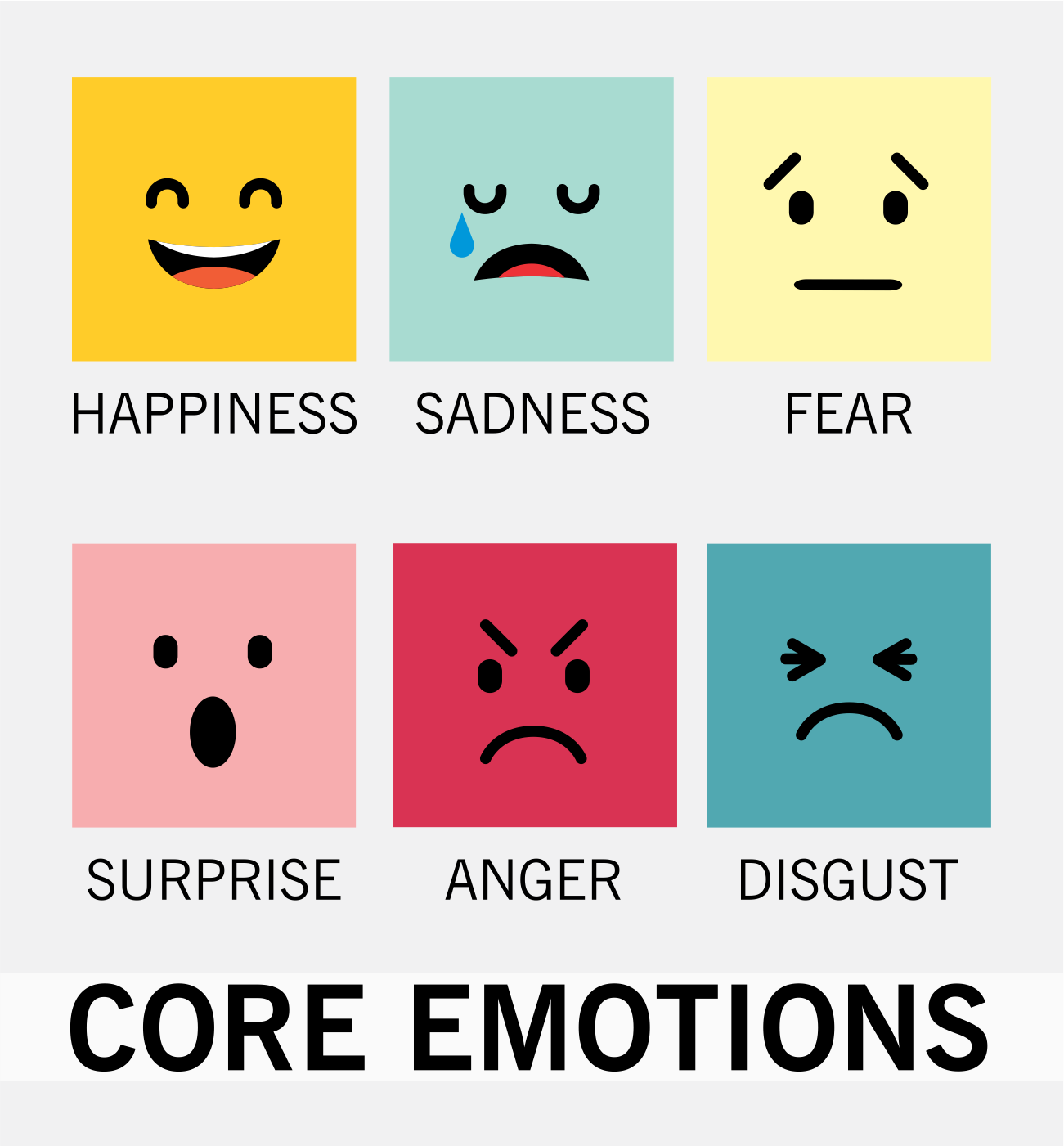
3. Focus on the Right Colors
The use of color is very important in an emotional marketing campaign. Color evokes emotion. The right colors can strengthen your brand identity and make your message more forceful. According to the psychology of colors, every color generates a different emotional response. Learning more about the psychology of colors can help you incorporate the right colors into your emotional marketing strategy.
- Blue has a calming effect. It conveys trust and security. No surprise then that it’s one of the most widely used brand colors in the world.
- Yellow is bright and positive. It conveys warmth and energy and, together with red, it grabs attention.
- Green represents nature, health, and good luck. It may relieve stress and help heal. It’s one of the most positive colors in the spectrum.
- Orange conveys energy, enthusiasm, and happiness. It commands attention and generates a sense of excitement.
- Black is associated with boldness, formality, power, and luxury. As one of the most versatile colors, black can be easily combined with other colors.
- White evokes peacefulness, purity, and cleanliness, in the Western world at least. In Eastern countries, it’s associated with sadness and death.
- Red symbolizes love, passion, and power. An intense color, you can use it to generate energy and excitement.
- Purple symbolizes wealth and luxury and has an exotic flavor. A rich and tactile color, it evokes sensuality but at the same time it can have a soothing effect.
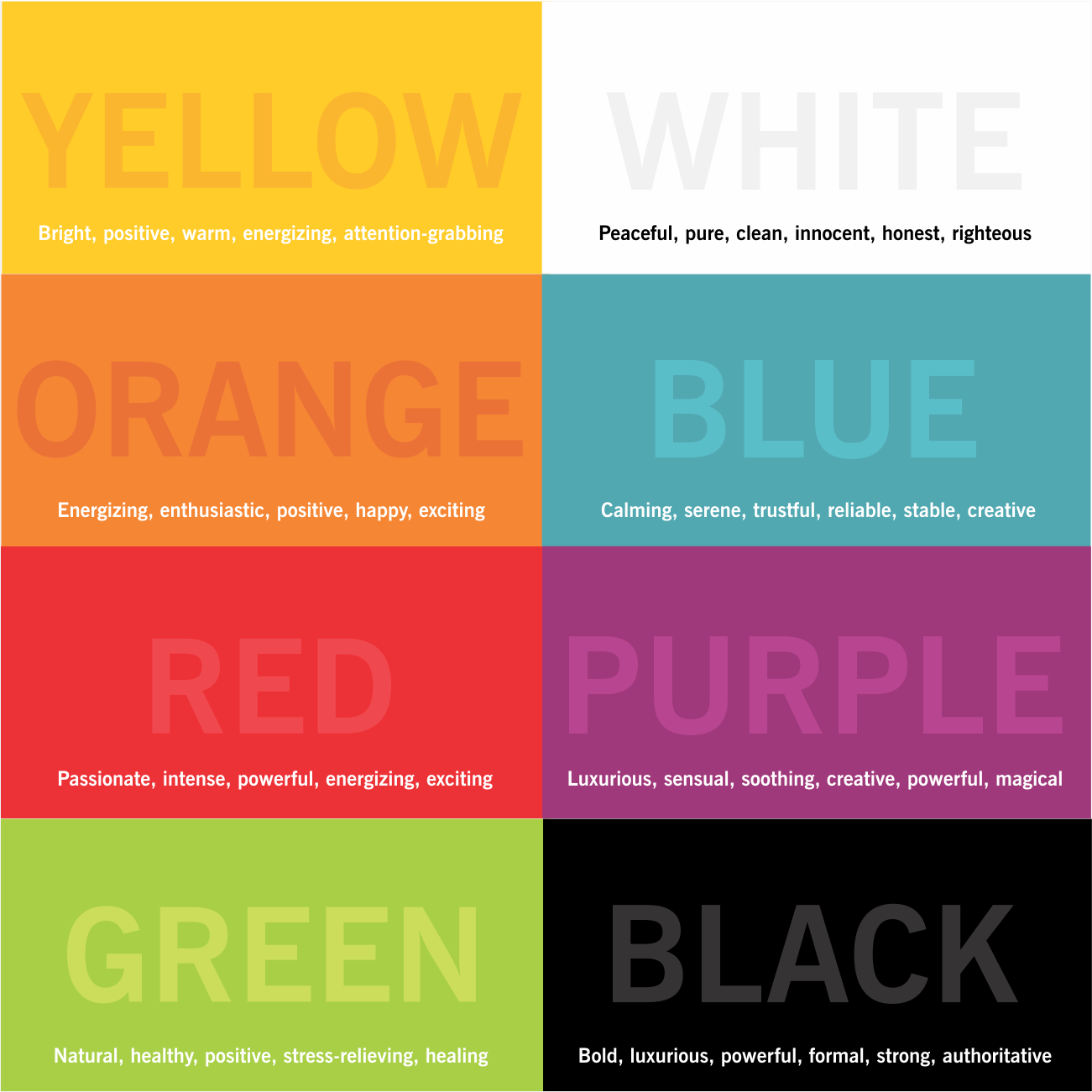
4. Find Your Story
Stories are the perfect vehicle for emotional marketing. Whether they are written, presented as a succession of images, or turned into a video, stories arouse curiosity and attract attention. People relate to them and share them more easily than other content.
Stories activate different parts of our brain that relate to the content of the story. When people hear a story about food, their sensory cortex becomes active. Stories make people more receptive to your message.
Stories work across channels and platforms and can convey all the core human emotions with sincerity and force. But turning your marketing into a story is not enough. Today, storytelling has become an overused marketing device.
Customers hear the same brand stories quite often. So, how can you bring together emotional marketing and storytelling? Here are some ideas to get you started.
- Turn your blog posts into customer or employee narratives
- Use video marketing to transform traditional case studies and customer testimonials into stories
- Use influencer marketing to create small stories around your products
- Create a social media series of posts that tell the story of your brand
- Team up with an article writing company to make the transition to storytelling easier
- Work with a visual content creator to add a creative touch to your content
5. Create a Sense of Community
Add a stronger dimension to your emotional marketing by building a community around your brand. Use social media groups, apps, forums, and a membership system on your website to bring people together.
Social media, in particular, can be a powerful tool for this. Use hashtags to broaden your reach on Instagram and beyond. To build a community faster, create a sense of purpose. Identify a concern, pain point, or common mission that resonates with your followers. Build on that your message.
6. Choose the Right Content
An emotional marketing strategy may include a variety of content, some of it planned and some more spontaneous. However, some types of content can carry a higher emotional charge than others. For this reason, emotional marketers often include them in their strategies. Key emotional marketing content types include:
- Visual content: custom imagery, graphics, infographics, slideshows, presentations
- Videos: informercials, case studies, interviews, short documentaries
- Blog posts that tell stories
- Creative copywriting that evokes emotion
- Interactive content that provides a personalized user experience
- Short animated videos for Instagram
Choosing the right content for your social media marketing campaign may be a process of trial and error. Try different types of content to find the ones which engage your audience the most.
7. Track Results
Tracking the results of your emotional marketing campaign is just as important as being creative. Identify the key metrics you want to track such as social engagement, conversions, or sales. Use analytics and monitor results over time.
While a growing social media following is a healthy metric of a successful emotional marketing campaign, you should go deeper. Measure how many of your new followers are engaged. Draw on social media insights and conversions. After all, you don’t want to end up with a large but unengaged following.
8. Team Up with a Content Creation Company to Simplify the Process
While most companies can benefit from emotional marketing, many of them don’t have the marketing team or the resources they need to create an effective campaign. Emotional marketing requires a creative direction and a host of skills, including copywriting, graphic design, image editing, and video production.
More than this, it requires plenty of content. You need a content calendar and the capability to produce engaging content regularly. An article writing company can help fill the content gap while giving your emotional marketing strategy a clearer direction. It can also save you time and resources which you can invest in other tasks.
Best Emotional Marketing Campaigns to Inspire You
Need a bit of a nudge to get started with emotional marketing? Here are some exceptional emotional marketing campaigns that will inspire you to roll up your sleeves and get to work (Yes, emotional marketing is work!)
World’s Apart – The Power of Empathy
Heineken’s World’s Apart campaign brought together people with radically different outlooks on life and encouraged them to talk over a drink. But there was a catch – neither of them knew how different their views were. Only after they got to know each other a bit was the contrast between them revealed. The emotional, humane responses that followed highlighted the power of empathy.
The Truth Is Hard – Restrained Emotion
The New York Time’s The Truth is Hard campaign is a great example of how text and video can be combined to send a strong message. In a world where fake news and misinformation are common despite the wide availability of communication channels, the New York Times struck a chord with their audience. This campaign was special not least because its emotional impact was so restrained.
Stop Climate Change – Fear-Based Emotional Marketing
Fear too can make marketing more effective. The World Wide Fund drew on fear to raise awareness about climate change and create a sense of apprehension. The creepy imagery managed to elicit a strong reaction without scaring off people. WWF took visual emotional marketing to the edge of what it can do and wisely stopped there.
Free Queso – Incentive-Driven, Customer Marketing
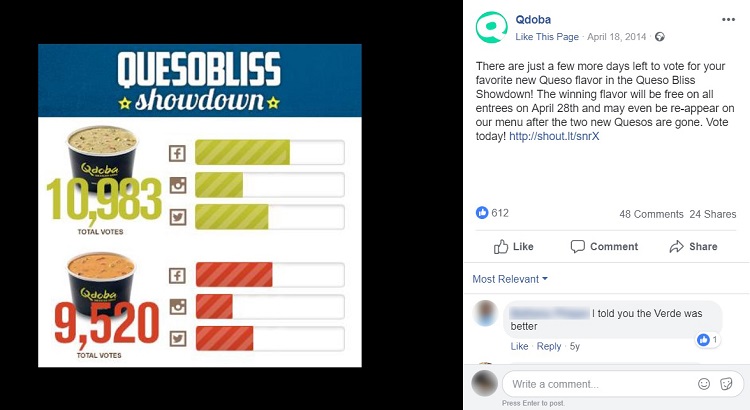
Queso Bliss invited their social media fans to choose which of their special quesos were the best. The campaign generated a lot of engagement and provided a strong incentive – the winning queso would be free on a specific day. This example of marketing that invites user participation is the best.
Anthropologie – Turning Fans into Models

Anthropologie used Instagram to encourage customers to post photos of themselves on social media wearing the brand’s clothes. Many of these images were upbeat and fun – something the brand anticipated, and which refreshed their social media content. And then there was the reward – a chance to model for the brand. The campaign generated a lot of engagement and healthy competition between fans.
As these examples show, emotional marketing comes in different flavors and can be very creative.
Emotional Marketing Mistakes to Avoid
Getting emotional marketing right requires planning and some degree of experimentation. You cannot tell how your audience will react to your content until you’ve published it. This makes it a more dynamic form of marketing than more conventional strategies. It calls for a hands-on approach and more direct interaction with your audience.
So, what are some of the most common emotional marketing mistakes?
Focusing on the Wrong Emotion
In 2016, Gourmet Burger Kitchen launched a provocative anti-vegan marketing campaign. Posters with captions such as “You’ll always remember when you gave up being a vegetarian” attracted attention for all the wrong reasons. In just two days, after a social media backlash and a deluge of complaints, the brand pulled off its ads.
But focusing on misplaced positivity can be just as damaging to a brand, especially when it carries the wrong undertones. BiC found this out the hard way in 2015. The French-based disposable goods brand tried to send a positive message on Women’s Day and came up with “Look like a girl. Act like a lady. Think like a man. Work like a boss.” The “Think like a man” part sparkled outrage, with many seeing it as one of the worst possible messages to send on Women’s Day.
Not Sustaining Your Emotional Marketing with Facts
Even if people buy on emotion, that doesn’t mean you can’t use facts to reinforce your message. You can add facts to convey trust and give your target audience yet another reason to pay attention to what you are saying.
A positive example comes from Bank of America. Teaming up with Khan Academy, the bank launched a series of educational videos focused on financial education. By presenting personal stories to which their audience could easily relate, Bank of America mixed the personal with number-crunching to make some far from interesting concepts easy to understand.
Not Timing It Right
Emotional marketing can backfire in the wrong context. Take for example Airbnb’s Floating World marketing campaign. The accommodation service wanted to promote the diversity of its offerings and featured a house floating on water and the message “stay above water.” But there was a problem – the campaign launched exactly when Hurricane Harvey hit Houston.
Planning your emotional marketing campaign is good, but you have to keep an eye on what’s happening in the news. What at first may look as playful and inspired marketing can misfire if it reaches people when they are not in the mood for jokes.
Not Adding Video to Your Campaign
Video is arguably the most emotionally compelling content format currently available to marketers. It grabs attention, it’s accessible, and it allows for the blending of images, text, and sound to send a stronger message.
The costs of video marketing deter many small brands from using this content format. But today, it’s possible to create emotionally engaging video content at a good price. Add to that the fact that video is the most satisfying content type, and video marketing becomes far less daunting.
Don’t have an in-house video production team? Don’t let that discourage you. You can always turn to a video creation service.
Not Providing an Incentive
Emotional marketing can be uplifting and inspiring. It can arouse curiosity and generate interest. When it’s done well, it can galvanize a distracted audience into taking action. But when you pair emotional marketing with an incentive, you make it all the more powerful.
This can be anything from a discount code to a free download or some other perk. If you want to generate more than engagement and increase conversions as well, make sure to add an incentive.

Time to Get Emotional
Why bombard your audience with features and promises when you can use emotion to connect with them on a personal level? More than a trend, emotional marketing is a proven approach to marketing that reaches people in a way that no other marketing strategy can.
Getting started with emotional marketing doesn’t have to be challenging. If creating an emotional marketing strategy daunts you, you can team up with a content writing company to streamline the whole process. This will give your emotional marketing campaign a clear direction right from the start.
In the end, emotional marketing creates a bridge between you and your audience. It’s a direct and straightforward approach to cutting through the marketing noise and getting people interested in your brand. It’s a way of cutting to the chase and focusing on what matters for them, for you, for everyone.
